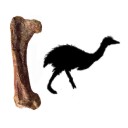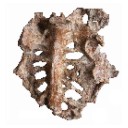Print ISSN: 0031-0247
Online ISSN: 2274-0333
Frequency: biannual
stratigraphy and biochronology of Oligo-Miocene of Kazakhstan
Notidanodon tooth (Neoselachii: Hexanchiformes) in the Late Jurassic of New Zealand
Additions to the elasmobranch fauna from the upper Cretaceous of New Jersey (middle Maastrichtian, Navesink Formation)
Fossil snakes, Palaeocene, Itaborai, Brazil, Part I
Eocene otoliths (Clinchfield Formation), Georgia
Eocene (57) , Quercy Phosphorites (38) , Systematics (32) , Rodents (29) , Mammalia (27)

|
|
|
|

|
New remains of the giant bird Gargantuavis philoinos from the Late Cretaceous of Provence (south-eastern France)Eric Buffetaut, Delphine Angst, Patrick Mechin and Annie Mechin-SalessyKeywords: Aves; Gargantuavis; Late Cretaceous; Pelvis; South-eastern Francedoi: 10.18563/pv.39.2.e3 Abstract
Article infos Published in Vol.39-2 (2015) |
|